The establishment has already acknowledged a lost race of giants - Part 1
Top Image: 3d Digital Sculpture of Giant with hair, copper breastplate, and gorget.
One of the most controversial subjects regarding the ancient prehistoric cultures of North America concerns what we refer to as the Unique Physical Types (UPT). For the purposes of what follows, these UPT are often gigantic humanoid skeletons with hyper elongated or high-vaulted crania, occasional extra or pathological detentions (including several reports of double or triple rows of teeth), and are usually discovered in the burial mounds and associated graveyards of the Adena-Hopewell, Archaic Cultures, and Southeastern Ceremonial Complex.
Accounts of a Lost Race of Giants
It is common today for alternative history researchers to tell the story of how these beings were discovered en masse throughout the 19th and early 20th centuries. Historians, antiquarians, and archaeologists recorded the discovery of the Unique Physical Types all over the United States, with a large concentration found in the mounds and earthworks of the Ohio River Valley and along the Mississippi River. These accounts can be found in any number of county, township, and state histories, as well as anthropological literature from both inside and outside of the Smithsonian Institution. Here are several examples:
Kentucky: “From a mound on the farm of Edin Burrowes, near Franklin, were exhumed, in May, 1841, at a depth of over 12 feet, several human skeletons. One, of extraordinary dimensions, was found between what appeared to have been two logs, covered with a wooden slab. Many of the bones were entire. The under jaw-bone was large enough to fit over the jaw, flesh and all, of any common man of the present day. The thigh-bones were full six inches longer than those of any man in Simpson County. Teeth, arms, ribs, and all, gave evidence of a giant of a former race”. (History of Kentucky, Lewis Collins)
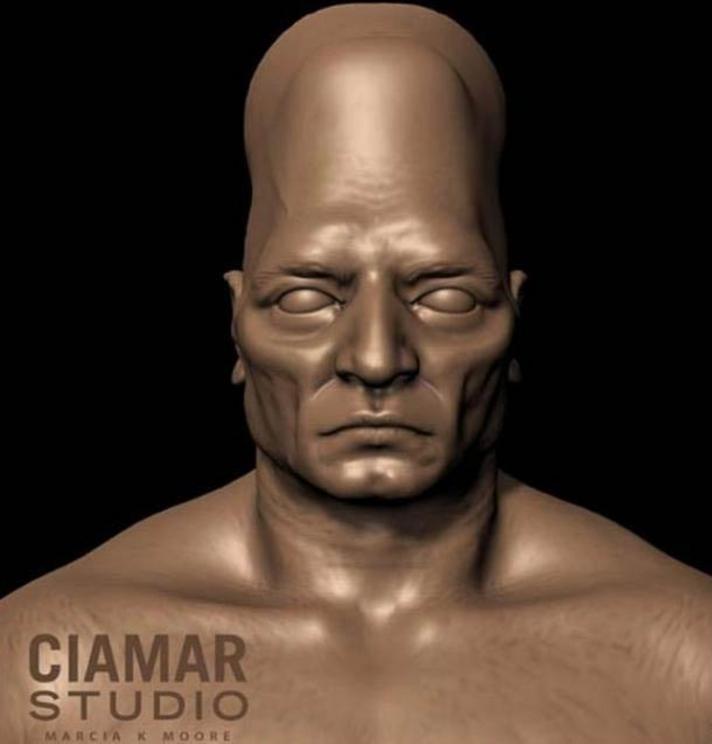 Artist’s representation of a North American giant.
Artist’s representation of a North American giant.
Jo Daviess County, Illinois : “The mounds on the bluff have nearly all been opened within the last two or three years…In all that have been opened the excavators have found in the center a pit that was evidently dug about two and a half feet below the original surface of the ground…The bones in this pit indicate a race of gigantic stature, buried in a sitting posture around the sides of the pit, with legs extending toward the center”. (The History of Joe Daviess County)
“Near the original surface, 10 or 12 feet from the center (of the mound), on the lower side, lying at full length upon its back, was one of the largest skeletons discovered by the Bureau agents, the length as proved by actual measurement being between 7 and 8 feet. It was all clearly traceable…” (12th Annual Report of the Bureau of Ethnology)
Kanawha Valley, West Virginia : “No 11 is now 35 by 40 feet at the base and 4 feet high. In the center, 3 feet below the surface, was a vault 8 feet long and 3 feet wide. In the bottom of this, among the decayed fragments of bark wrappings, lay a skeleton fully 7 feet long, extended at full length on the back, head west…. Nineteen feet from the top…in the remains of a bark coffin, a skeleton, measuring 7.5 feet in length and 19 inches across the shoulders, was discovered”. (12th Annual Report of the Bureau of Ethnology)
“Within the village of Brownstown, ten miles above Charleston and just below the mouth of Lens creek, is another such ancient burying ground…At Brownstown, not long since, two skeletons were found together, one a huge frame about seven feet in length and the other about four feet, a dwarf and deformed”. (History of the Great Kanawha Valley)
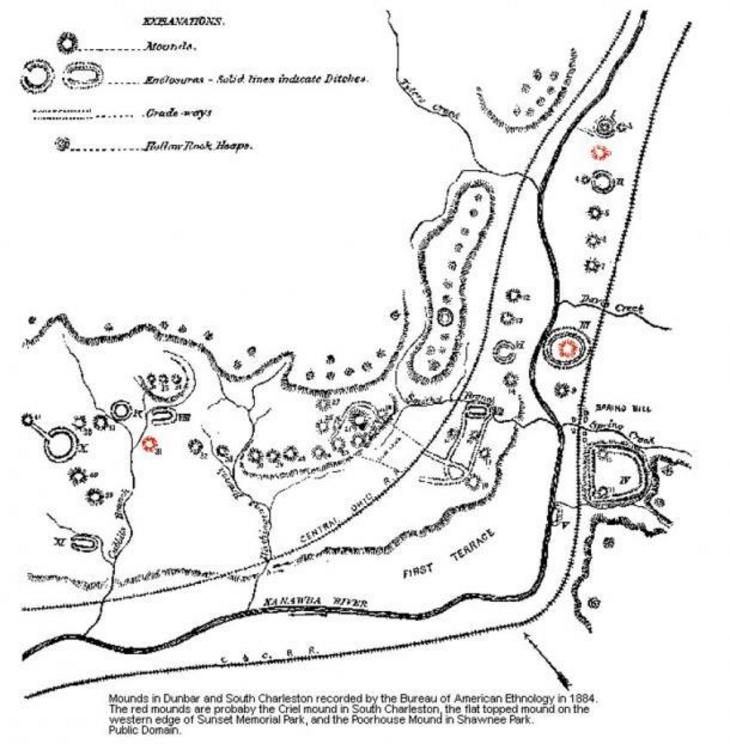
More Anomalous Giant Remains
Florida: “Pursuing my investigations, and excavating further toward the south east face of the mound, I came upon the largest stone ax I have ever seen or that had ever been found in this section of the country. Close to it was the largest and most perfect cranium of the mound…Near by the side of this skull were the right femoris, the tibia, the humerus, and part of the radius, with a portion of the pelvis directly under the skull…Anticipating a perfect specimen in this skull, I was doomed to disappointment, for, after taking it out of the earth and setting it up, so that I could view the fleshless face of this gigantic savage, in the space of two hours it crumbled to pieces, except small portions. According to measurement of the bones of this skeleton, its height must have been quite 7 feet”. (Annual Report of the Boards of Regents of the Smithsonian)
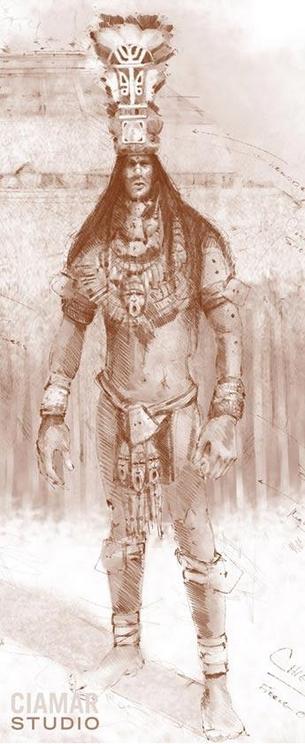 Digital sketch, ancient Florida giant.
Digital sketch, ancient Florida giant.
Louisiana: “In the same line of abnormality was the finding of one skull in which the detention reached the unusual number of forty teeth, the increase consisting of eight additional incisors…The formation of the skull found in the Larto mound, as compared with those of other localities, is highly anomalous…The anomaly in these cases cannot be ascribed to artificial disfiguration, for, were it such, the otherwise symmetrical development of the other parts would be impossible…their remarkable conformation could not possibly have been the result of bandages or other external appliances, but was undoubtedly congenital”. (Publication of the Louisiana Historical Society)
Etowah Mound Group : “Grave A, a stone sepulcher, 2.5 feet wide, 8 feet long, and 2 feet deep, was formed by placing steatite slabs on edge at the sides and ends, and others across the top. The bottom consisted simply of earth hardened by fire. It contained the remains of a single skeleton, lying on its back, with the head east. The frame was heavy and 7 feet long”. (12th Annual Report of the Bureau of Ethnology)
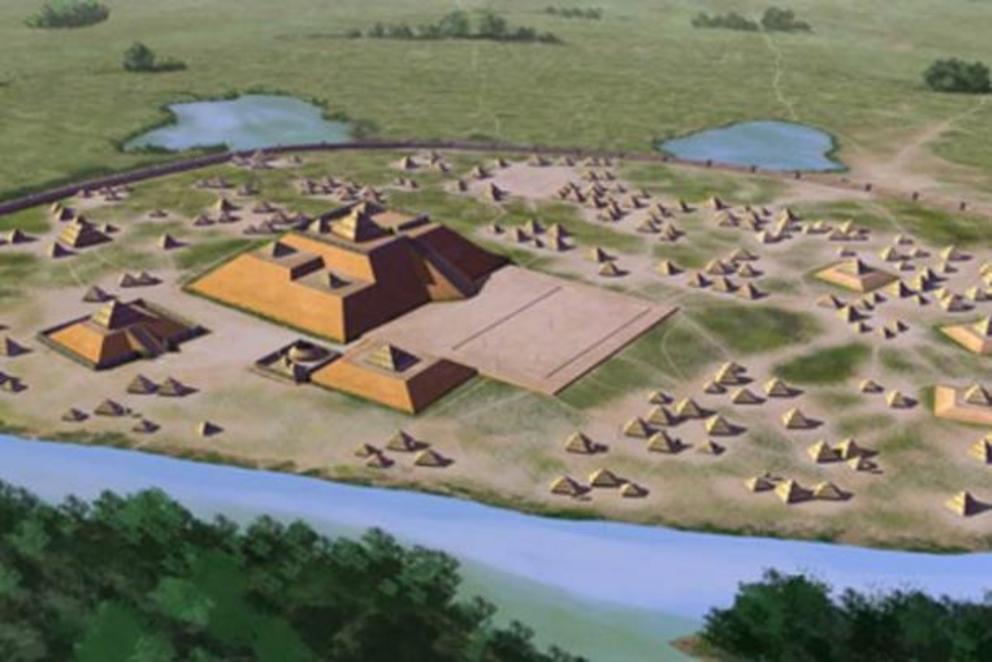 Artist’s conception of the Etowah site (9 BR 1), a Mississippian culture archaeological site located on the banks of the Etowah River in Bartow County, Georgia. Built and occupied in three phases, from 1000–1550 AD.
Artist’s conception of the Etowah site (9 BR 1), a Mississippian culture archaeological site located on the banks of the Etowah River in Bartow County, Georgia. Built and occupied in three phases, from 1000–1550 AD.
These examples represent the various anomalous features of the Unique Physical Types, which were encountered in the 19th and early 20th centuries. Spatially and culturally, they illustrate the extensive temporal and geographical range of these types. The Kanawha Valley Mound Builders left their remains in an area where some of the oldest Fayette Thick Adena Pottery and diverse types of mound construction have been found. It has recently been suggested that sites in West Virginia may push the “acceptable” beginning of the Early Woodland Period back to 1400-1300 BC.
The samples from Illinois come from a region where Archaic era mounds have been found, often with Hopewell Mounds built over and into them hundreds or thousands of years later, as in the case of Elizabeth Mound 1 and Peter Klunk Mound 7. The Etowah Mound (Mound C) is ascribed to the Mississippian Cult, dated to 950-1450 AD.
Denial of the Unique Types
After the Government and Philanthropies took over American Archaeology in the 1900s, the establishment undertook the policy of flatly denying the existence of anomalous remains.
The actual beginning point for the revisionist tendency in the National Museum was very early. By 1851, E G Squier was working to debunk theories of pre-Columbian contact, and several decades later, Gerald Fowke would attempt to discredit and jettison the work of virtually every researcher in the field up to his day, including the skeletal measurements of his fellow agents in the Bureau of Ethnology. However, the denial of the Unique Types truly got underway during the reign of Ales Hrdlicka as the Curator of Anthropology at the Smithsonian (circa 1903).
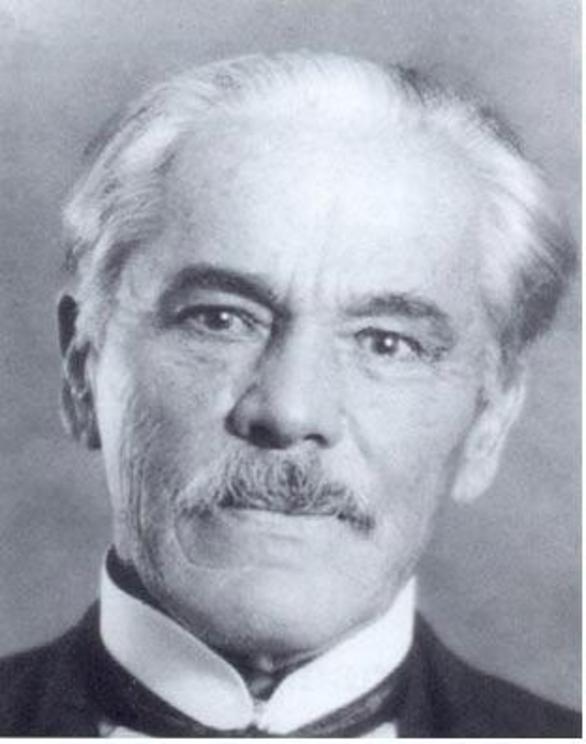 "Ales hrdlicka" by Unknown - Archive Museum of Aleš Hrdli?ka in Humpolec.
"Ales hrdlicka" by Unknown - Archive Museum of Aleš Hrdli?ka in Humpolec.
Hrdlicka seems to have made a hobby of constantly disparaging the notion that anomalous skeletons were ever found. This was done in scholarly works as well as public venues:
And the ‘giant’ and ‘eight-foot’ skeleton is to this day the almost stereotyped feature of many an amateur report of a find of skeletal remains in Florida as well as other parts of the country. All these reports…it may be said once and for all, are exaggerations.
Dr. Hrdlicka blames the ‘will to believe’ of amateur anthropologists for many reports of ‘discoveries’ which find their way to his office with monotonous frequency…the purported ‘finds’ describe a race of ancient giants between 7 and 8 feet tall with bones and jaws considerably larger than those living today…Next to human ‘giants’ Dr. Hrdlicka reports, fancy finds its sway with human ‘dwarfs’.
Interestingly, Hrdlicka’s name appears in several reports of discoveries of gigantic skeletons during his tenure at the American Museum:
The skeletons of these Hitherto Unknown American Aborigines Showed They All Ranged in Height from Six and One-Half to Seven Feet…Excavating in the sand dunes of the sun-sprayed Golden Isles, Georgia, archaeologists have gouged out the strange record of an amazing prehistoric race of giants…What manner of men were these, the members of whose tribe all averaged six and one-half and seven feet tall?...Some of the first skulls to be disinterred by Preston Holder have already been examined at the Smithsonian Institute by Dr Ales Hrdlicka, foremost authority on North American Types.

